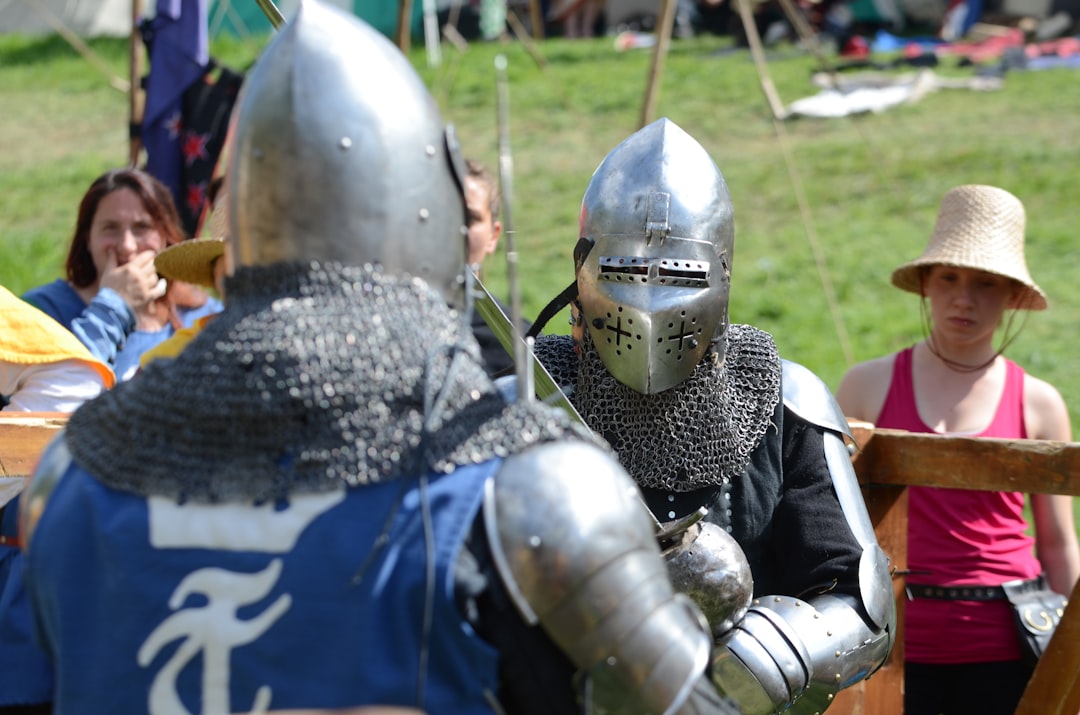Gaming enthusiasts and industry insiders alike are buzzing over the announcement of Kingmakers, a genre-bending title that dares to bridge the chasm between medieval warfare and modern tactical combat. Developed by indie studio Redemption Road Games, Kingmakers promises a gameplay experience unlike anything seen before. The game melds the steel-clashing world of swords and shields with the precision and power of guns, drones, and armored vehicles. The result is a strategic and chaotic sandbox where time-periods collide in astonishing and unexpected ways.
The Core Concept: History Meets High-Tech
At its essence, Kingmakers is an immersive third-person action-strategy game set in an alternate version of medieval England experiencing paradoxical time disruptions. Players take on the role of a modern operative sent back in time on a mission to change the course of history. The goal: install a favorable monarch to the throne, preserve a timeline gone awry, and reshape global events.
What sets Kingmakers apart is not just the story—the hitman-in-iron strategy—but the intriguing fusion of warfare elements. Imagine clashing with cavalry while riding in tactical vehicles, deploying airstrikes on castles, or holding off a feudal charge with modern rifles. This high-concept duality gives the game its title: you are not just fighting history; you’re rewriting it.

Gameplay Mechanics: Layers of Strategy and Action
The game straddles multiple genres, blending elements of real-time strategy, third-person action, and sandbox warfare. Here’s a closer look at the fundamental systems players will engage with:
1. Tactical Combat
Players can directly control a modern soldier armed with a customizable array of firearms, from assault rifles and sniper weapons to grenades and drone systems. Tactical gear such as night-vision goggles, motion sensors, and body armor gives players a significant edge—but the medieval enemy isn’t without its own challenges. Think archers, knights, siege weapons, and overwhelming numbers.
2. Strategic Command
When not in direct control, players can shift into a top-down strategy view, issuing commands to friendly units, fortifying strongholds, or coordinating vehicle movements. This RTS-style layer allows for large-scale, battlefield-wide planning that adds vital depth to engagements.
3. Sandbox Flexibility
Kingmakers takes a page from sandbox mainstays like Garry’s Mod and Mount & Blade. Missions can be approached from various angles—use brute force and firepower, or manipulate politics, assassinations, and espionage to alter power structures. The open-world design allows players to devise and execute unique strategies, making every campaign distinctly personal.
4. Time-Travel Influence
Crucially, the game integrates a lore-based time-travel mechanic. Altering key events in the past affects later missions. For instance, sparing a historical figure may result in modern-day allies turning against you, while reshaping alliances early in the campaign can shift subsequent geography, alliances, and technology availability.
Visual Realism and Battlefield Chaos
Graphically, Kingmakers is built using the cutting-edge Unreal Engine 5, allowing for destructible environments, nuanced lighting, and massive-scale battle simulations. With thousands of AI-controlled soldiers clashing on-screen simultaneously, seamless large battles are at the heart of the gameplay experience.

Battlefields are vibrantly detailed with dynamic weather conditions, ranging from besieged castles during thunderous storms to sun-drenched plains littered with debris and fallen warriors. Players can utilize terrain, elevation, and weather effects to tip the balance in large-scale sieges or rapid counterattacks. The physical destruction of environments—walls cracking, bridges collapsing under cannon fire—adds a visceral realism to combat encounters that few titles achieve.
Single and Multiplayer Possibilities
Though the campaign mode features a compelling single-player story, Redemption Road Games has also teased robust multiplayer features. Here’s what has been confirmed and speculated:
- Co-Op Campaigns: Team up with friends to alter history, each controlling a modern combatant among a medieval army.
- Asymmetric Multiplayer: One side uses advanced modern tech, while others lead traditional medieval units, creating balance-based match-ups where tactics matter more than raw firepower.
- Faction Control Mode: A potential large-scale conquest mode where players lead entire factions over weeks-long campaigns, taking turns influencing the evolution of the timeline.
This hybrid gameplay is fertile ground for community-driven mods and custom battles, with a speculative in-game editor said to be in development. Enabling players to create their own scenarios and campaigns would significantly increase the title’s longevity.
Philosophy and Themes
Beyond combat, Kingmakers challenges players with broader questions of morality and ethics. Should a technologically advanced outsider intervene in the fate of nations? If given control over history, would you preserve traditions or prioritize efficiency and progress? Integrating narrative complexity, the game gives real weight to player choice.
The developers are also setting out to explore themes of dominance and diplomacy. With NPC factions and rival leaders that react dynamically to battlefield outcomes, your reputation as a “Kingmaker” may shift from liberator to oppressor depending on your actions.
Progression and Customization
As players progress, they earn access to a wider set of tools from both eras. Here are some systems that have been hinted at:
- Base Outposts: Construct hybrid fortresses blending medieval stonework with 21st-century defense turrets.
- Hero Units: Select and level up central characters with unique skills, gear, and political influence.
- Faction Prestige: Gain or lose the loyalty of various kingdoms and entities based on performance, allowing or denying access to certain weapons and diplomatic options.
Loadout customization also plays a significant role. Weapons can be tailored for accuracy, recoil control, fire rate, and appearance. Likewise, vehicles can be equipped with battering gear for sieges or anti-personnel turrets for crowd control. The juxtaposition of a chariot flanked by drones or a knight riding in an armored Humvee becomes a mid to late-game reality.
The Road to Release
The development team has shared a roadmap outlining their vision for alpha tests, feedback implementation, and eventual launch. Current projections suggest an early access release in 2025. A closed beta, invite-only, will be rolled out to select players within the next few months, focusing on both balance tests and stress testing battles exceeding 1,000 active combatants.
Transparency appears central to the project’s philosophy, with weekly dev blogs and community voting for certain design choices. This signaling of trustworthiness and openness has already engrained early goodwill within the gaming community.
Conclusion: A New Class of Warfare
While blending historical and modern elements is not new in entertainment, Kingmakers looks poised to do it with unmatched ambition, strategic depth, and visual fidelity. Its hybrid gameplay mechanic—combining boots-on-the-ground tactics with overarching timeline management—sets it apart in a market saturated with historical accuracy or sci-fi extrapolation. This is not merely a game about war; it is a game about influence, ideology, and control over the framework of civilization itself.
In a landscape eager for new frontiers, Kingmakers may just carve out a kingdom all its own.

